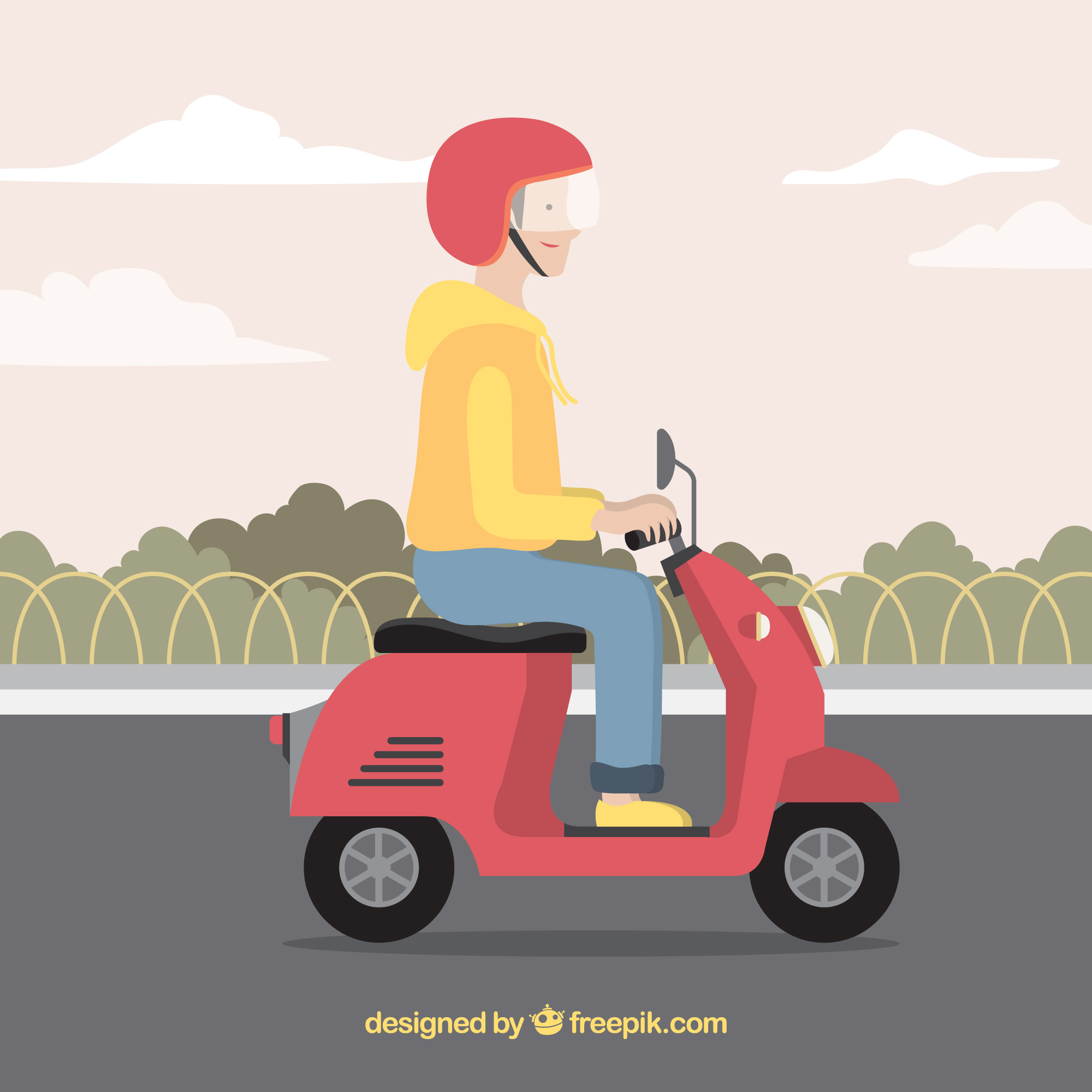5 Safety Tips for Riding a Two-Wheeler This Monsoon

The season of rejuvenation and air filled with earthy aromas is here. Monsoons bring much-needed respite from the scorching summers in India. It's all fun and frolic until you decide to step out of your home in the rainy season, especially if you have to commute on a two-wheeler. The struggle of riding a two-wheeler in such a weather condition that comes bundled with many challenges can be difficult.
Don't worry, we've got you covered! Here are the top 8 safety tips to ensure you have a smooth and safe ride this monsoon:
Problem 1: Slippery Streets
The first showers act like a natural degreaser, washing away oil and dust from the road surface. This creates a slippery film that reduces traction and makes it difficult to control your two-wheeler.
Safety tips to consider :
- Ride Slow: Avoid the temptation to speed. Maintaining a moderate speed allows you to react quickly and control your vehicle better.
- Protective Gear: Wear a full-face helmet, knee guards, and other protective gear to minimize injury in case of a fall.
- Maintain Distance: Increase the following distance between you and other vehicles. This gives you more time to react to sudden stops or swerves.
Problem 2: Reduced Visibility
During heavy rains, it becomes very difficult to clearly see the road ahead. The misty weather hampers your ability to ride a two-wheeler, so it is important to exercise precaution and care when you ride your bike in such a condition.
Safety tips to consider :
- Ride Slow: Similar to slippery roads, adjust your speed to the weather conditions.
- Anti-Fog Visor: Invest in an anti-fog visor for your helmet to ensure clear vision throughout the ride.
- Reflective Gear: Wear a reflective jacket, or use reflective stickers on your helmet and bike. This will make you more visible to other drivers during low-light conditions.
- Headlights On: Keep your headlights and parking lights on, even during the day, to improve your visibility.
Problem 3: Aquaplaning
When excessive water comes underneath the bike tire, making the tire lose its grip, this is called aquaplaning. This is very common during the rainy season, especially in areas prone to water logging.
Safety tips to consider :
- Avoid Puddles: Be extra cautious while approaching puddles, especially large ones. Try to navigate around them if possible.
- Anti-Slip Tires: Consider using anti-slip or monsoon-specific tires designed for better grip on wet roads.
- Moderate Speed: Maintain a moderate and steady speed to minimize the risk of aquaplaning.
- Avoid Sudden Braking: Sudden braking can cause the wheels to lock, further worsening the situation. Apply brakes gently and progressively if needed.
Problem 4: Potholes
Potholes are a common issue in India, and these potholes usually worsen during peak monsoon time. The ability to comfortably ride and balance the two-wheeler on such a route is severely affected. It is better to avoid such routes during heavy rains.
Safety tips to consider :
- Ride Slow: As always, adjust your speed according to the road conditions.
- Avoid Potholes: When possible, try to swerve around potholes safely.
- Gradual Braking: Apply brakes gently, especially when approaching uneven surfaces.
- Maintain Distance: Maintain a safe distance from the vehicle ahead to give yourself time to react to sudden maneuvers.
Problem 5: Strong Winds
In the case of a thunderstorm, the chances of strong winds are quite high. If you happen to be on the road in such a situation, it's better to wait until the winds lose their intensity.
Safety tips to consider :
- Weather Check: Check the weather forecast before heading out. If a thunderstorm is predicted, it's best to postpone your ride.
- Shelter from Trees: Avoid taking shelter under trees during strong winds. Trees are susceptible to lightning strikes and falling branches.
- Avoid Highways: Highways are more exposed to strong winds. Opt for smaller roads if possible.
- Slow and Steady: Ride slowly and maintain a steady course to avoid being blown off balance.
Bonus Problem: Flooded Streets
Riding a two-wheeler on a flooded route is the trickiest of all. You cannot precisely judge the water depth or what’s underneath the water. Furthermore, the risk of engine stalling is high if you have to ride a bike on such a route.
Safety tips to consider :
- Waterproof Gear: Wear waterproof clothing and boots to protect yourself from the rain.
- Walk the Bike: If the water level is low enough, consider walking your bike through the flooded area.
- Avoid Braking: Avoid sudden braking or acceleration in flooded areas.
- Be Aware of Surroundings: Pay close attention to your surroundings and watch out for hidden obstacles or currents in the water.
Conclusion
The monsoon season is undoubtedly a time to enjoy the pitter-patter of rain and the beauty of nature after every downpour. You can make the most of this weather by taking a few precautions and preparing yourself in advance for the ride ahead. Plan your route smartly, check the weather forecast, ride slowly, and wear protective gear.
Also, consider purchasing a comprehensive bike insurance policy that can help you lower the financial burden in case anything happens to you or to the bike, as well as cover third-party liability.
Disclaimer: The content on this blog is for informational purposes only and should not be considered as professional advice or any form of opinion. Please go through policy related documents carefully or consult with a qualified agent before making any decisions regarding two-wheeler insurance or financial matters.

